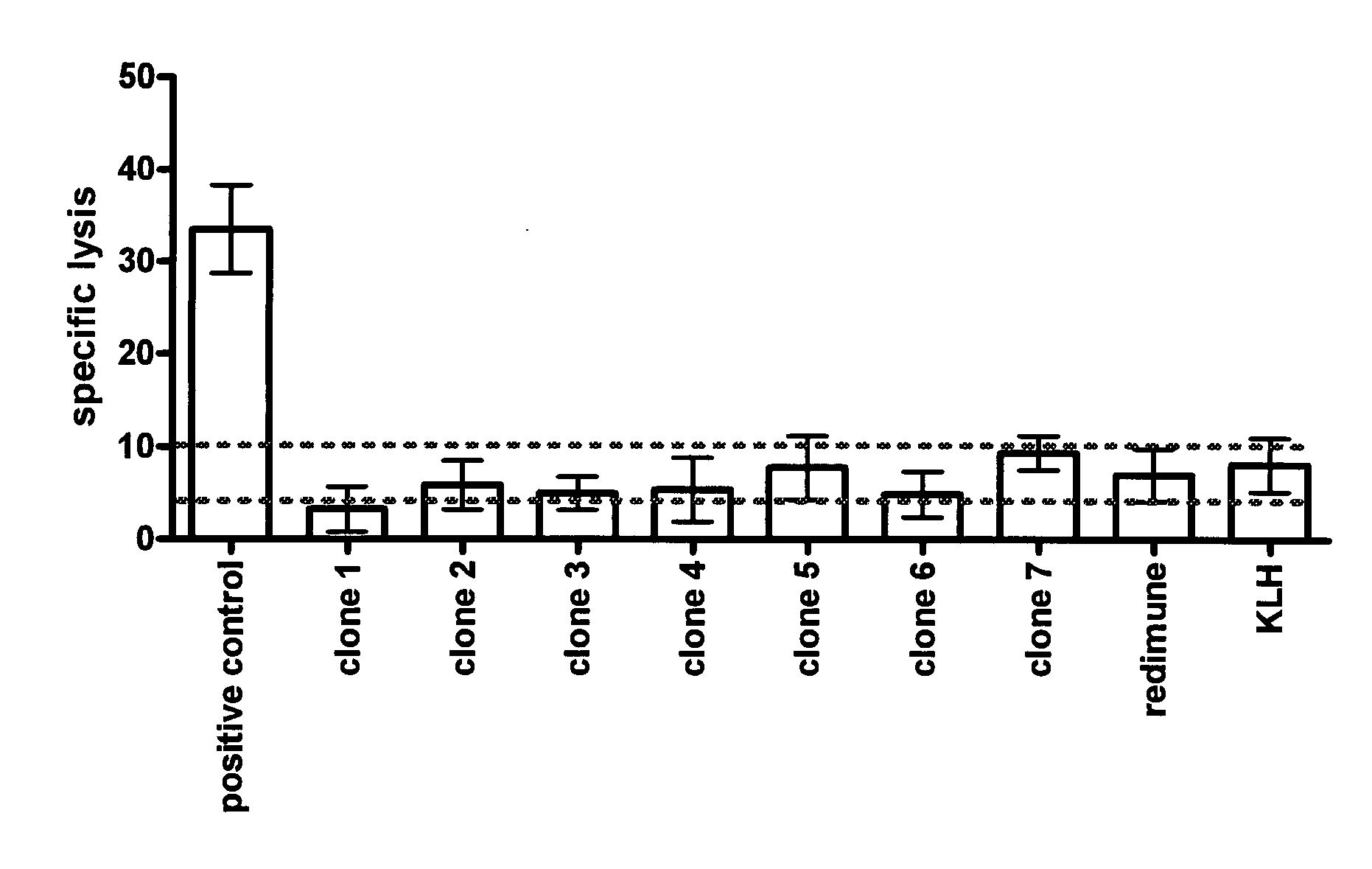Antibodies against insulin-like growth factor I receptor and uses thereof
a technology of growth factor and receptor, which is applied in the field of antibodies against insulinlike growth factor i receptor, can solve the problems of not being useful for human patients without, and achieve the effect of prolonging the time to progression and reducing tumor growth
- Summary
- Abstract
- Description
- Claims
- Application Information
AI Technical Summary
Benefits of technology
Problems solved by technology
Method used
Image
Examples
example 1
Transfection and Selection
[0107] Transfection of the expression plasmid was carried out with Fugene (Roche Diagnostics GmbH). A day after transfection, DG44 cells were put under selection pressure consisting of MEM alpha Minus Medium, 10% dialysed FCS and 2 mmol / L L-Glutamine and 20 nM Methotrexate (MTX). After 3 weeks under selection pressure, single clones were picked from the plate and expanded. Supernatants were collected and the presence of the antibody was analyzed with a human IgG-specific ELISA. Subclones were further expanded and analyzed for specific antibody production. Clones were adapted to growth in suspension culture and serum-free medium, HyQ SFM4 CHO-Utility (HyClone #SH30516) containing 20 nM MTX. In parallel, the glycopattern profile was determined. Subclones were selected providing defucosylation of 2.0% or lower (referring to total molar oligosaccharide amount).
example 2
Cultivation and Purification
[0108] 3×105 cells / ml were grown in 125 ml shake flasks (Corning) filled with 30 ml medium at 37° C., 5% CO2, 100 rpm for 10 days. Cell density was measured by CASY Counter and supernatant was taken for determination of antibody concentration by protein A affinity chromatography. About 20 ml of each supernatant was purified for further biochemical characterization by Protein A chromatography (equilibration with PBS, wash with 25 mM sodium citrate buffer pH 5.2, elution with 100 mM sodium citrate buffer pH 2.8, CIP with 10 mM NaOH).
example 3
Analysis of Glycostructure of Antibody
[0109] Purified antibody material was analyzed by Liquid Chromatography / Mass Spectrometry (LCMS) Peptide map analysis. Samples were reduced (0.4M TRIS / HCl, 8M Guanidine / HCl, pH 8.5, DTT (3 mg / ml), carboxymethylated (iodoacetic acid) and cleaved with trypsin. The peptide—glycopeptide mixture was separated with RP-HPLC and analysed online with electrospray mass spectrometry. The m / z spectra of the glycostructure containing peptide were integrated, the results are given in Table 2.
TABLE 2Relative amount of glycosylation variantsClone No.G0 [%]G1 [%]G2 [%]NonFuc[%]Man1 [%]138.451.410.20.10.5244.347.68.10.10.6342.848.78.50.20.8449.243.67.20.31.2562.733.04.30.61.0660.435.54.20.51.2740.449.89.80.30.6846.945.97.30.31.1
High Mannose structures bearing four and five mannose residues respectively.
G0, G1, G2: reduced heavy chains with fucosylated biantennary complex type carbohydrate with 1, 2 or 3 terminal galactose residues.
nonFuc: reduced heavy ch...
PUM
| Property | Measurement | Unit |
|---|---|---|
| pH | aaaaa | aaaaa |
| pH | aaaaa | aaaaa |
| pH | aaaaa | aaaaa |
Abstract
Description
Claims
Application Information
 Login to View More
Login to View More - R&D
- Intellectual Property
- Life Sciences
- Materials
- Tech Scout
- Unparalleled Data Quality
- Higher Quality Content
- 60% Fewer Hallucinations
Browse by: Latest US Patents, China's latest patents, Technical Efficacy Thesaurus, Application Domain, Technology Topic, Popular Technical Reports.
© 2025 PatSnap. All rights reserved.Legal|Privacy policy|Modern Slavery Act Transparency Statement|Sitemap|About US| Contact US: help@patsnap.com


